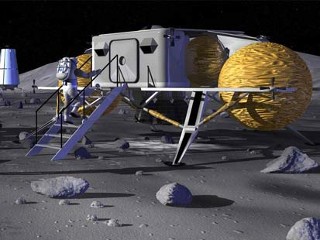By MARK CLAYTON
Amid rampant attacks from insurgents in 2004, some US commanders in Iraq began to shift strategy to include fixing environmental problems like clogged sewer lines, growing trash piles, and polluted drinking water.

In this file photo, a U.S. soldier stands guard at the Sharkh Dijlah water treatment plant in...

In this file photo, a U.S. soldier stands guard at the Sharkh Dijlah water treatment plant in Baghdad, Iraq. The tanks are full of enough clean water for some 200,000 Iraqis as the U.S. military prepares to open a new distribution site aimed at easing shortages in the capital.

(AP Photo)
That green-warrior approach to winning "hearts and minds" seemed to help. Attacks fell dramatically in Baghdad neighborhoods when troops restored clean water. "Fence sitters" in the conflict sided with US forces.
Yet despite several such successes and a strong environmental ethic on bases in the United States, US Army commanders typically overlook environmental concerns in plans for operations overseas, says a new RAND Corporation study.
Commissioned by the Army Environmental Policy Institute (AEPI), the study examined the role environmental considerations and issues play in the Army's "contingency operations" – long-term missions abroad that may involve conflict.
The conclusion: The US Army succeeds better when it's a deeper shade of green.
"Although environmental considerations are integral to the Army's ability to meet national objectives … they are often underrepresented in the competition for attention, investments, and manpower," the report states. While the Army does have some environmental policy guidelines for such operations, it "has no comprehensive approach to environmental considerations in contingencies, especially in the post-conflict phase."
As a result, fuel and other hazardous-waste spills, raw sewage gushing into local waters (from bases that were supposed to be temporary but grew to be permanent), and gargantuan garbage piles have plagued Army operations – and irritated local populations – from Haiti and Bosnia to Afghanistan and Iraq, the report found.
Does that mean soldiers must become tree-huggers? Not exactly. Department of Defense directives exempt combat operations from environmental requirements. But in one of its most striking findings, RAND says incorporating environmental concerns into planning contingency operations "can have a significant impact … and be particularly important for success in the post-conflict phase."
Army officials interviewed by the Monitor say ecoawareness is already high – but could be improved.
"I think we have a better appreciation for environmental considerations during contingency operations than we have ever had at any point in time in the past," says Tad Davis, deputy assistant secretary of the Army for environment, safety, and occupational health and a proponent of the RAND study.
"We're seeing commanders that really – they get it…. They have a thorough understanding of the impact, the second- and third-order effects in many cases, that environmental considerations have." A key benefit from wrapping the environment into military planning is that it protects US troops as well as civilians. In many nations that US troops enter, environmental conditions are already poor, and further degradation can alienate local populations. The Army got it right, the report says, when it put environmental monitors at the Iraqi port of Ash Shuaiba, where air pollution – including chemical releases and dust – was considered a major health threat. (Despite efforts to deal with dust and other pollution, releases of ammonia and sulfur dioxide sickened soldiers in April 2004.)
While US military doctrine calls for environmental baseline assessments when a base is established, that wasn't done in Iraq until much later. Such failures can lead to dangerous situations. In June, congressional hearings examined whether some 250 US soldiers had been exposed to toxic sodium dichromate while guarding an Iraqi oil installation.
In more than half of the 111 cases documented by RAND, the report concludes that US military actions directly or indirectly caused, or could have caused, additional environmental harm.
Environmental victories and setbacks
According to Pentagon policy, hazardous waste is to be disposed "in an environmentally sound manner." But bases often have inadequate plans to deal with hazardous wastes, resulting in soil contaminated by fuel or oil spills, contaminated containers, waste grease, and antifreeze.
At a US base in Afghanistan, a 50-pound bag of asbestos was found at a machine shop and roofing tiles on soldiers' barracks were confirmed to have asbestos in them. More recently in Afghanistan, improperly stored waste lithium batteries caught fire, releasing hazardous fumes.
The US has had environmental victories, too, including building a trash landfill for Baghdad to high standards, fixing water-treatment plants, and repairing local water wells in Iraq and Afghanistan.
Pre-planning averted the disastrous oil-well fires set by retreating Iraqi forces in the first Gulf War. And the US Army Corps of Engineers is working to restore the vast Mesopotamian Marshlands of Iraq that were drained by Saddam Hussein to deny his enemies safe haven.
Independent observers say the US military's performance is sketchy.
"Battle and defeating the enemy is [the US military's] first priority, and I have full sympathy for them if they cannot take care of the environment outside of their camp," says a UN official who served in the Afghanistan region and who asked not be named because he was not authorized to speak to the press. "But in camps where they use chemicals, these are controlled situations, and I would like to see a greater greening of their bases."
Requests for information on use of ozone-depleting chemicals by US and NATO forces were refused, the official notes. At Bagram Air Base, he says, official prohibitions do not prevent open sales of the hides of endangered animals by locals as souvenirs to US service personnel.
At the same time, the official applauds another US base, in Tajikistan, that shipped its hazardous waste in containers to the Netherlands for proper processing.
"In that instance, they did a very good job," this official says.
The RAND study refers only briefly to depleted uranium rounds. Past Monitor reports have found that using DU-tipped weapons to destroy enemy armor creates radioactive dust – as it has in Bosnia and in Iraq – that threatens soldiers and civilians. Some US veterans claim they were contaminated by DU residue.
Over a one-year period in Bosnia-Herzegovina in 1996, a US peacekeeping force of 20,000 generated some 2,000 tons of hazardous waste, the report says. At a base camp in Albania during NATO's involvement in the Balkans in 1999, no operating wastewater treatment plant was available, so sewage was released directly into a local river.
In Iraq, incidents include soldiers accidentally spilling diesel fuel into a lake. In another incident, 300 gallons of fuel were spilled onto the ground – and went unreported. That spill was finally detected and cleaned up, but could have polluted local groundwater and contaminated an area that was to become a US Army base.
'Powerful force' in achieving mission
"The war-fighter types – people in combat forces – don't think about these things as an environmental issue," says David Mosher, a senior policy officer at RAND and lead author of the report. "What we're saying is that in a lot of these countries, environment really cuts to life-sustaining issues – that's why it can be such a powerful force for advancing the mission."
The vast majority of commanders realize they have to have a good environmental program in place, "and the repercussions if they don't," says Col. Maria Gervais, commander of the US Army Environmental Command. "For the most part, commanders understand their obligations in terms of being environmental stewards while also ensuring mission accomplishment."
Original here
 The Great Worldwide Star Count will help discover how much light pollution is in the night sky.
The Great Worldwide Star Count will help discover how much light pollution is in the night sky.








